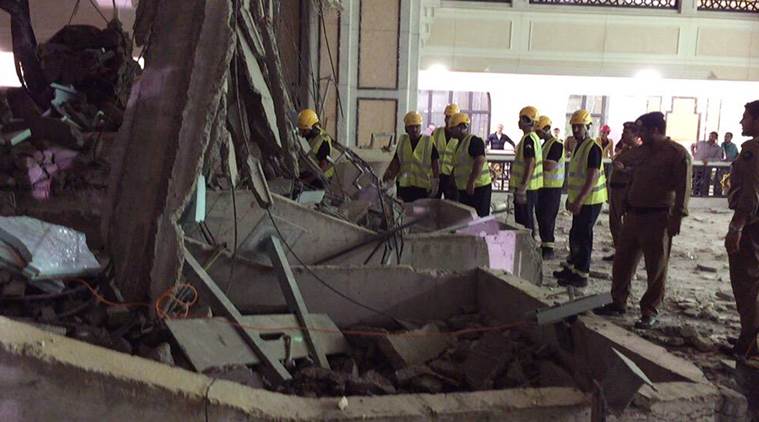Explained: Mecca crane crash
111 people were killed and 394 injured last Friday when a construction crane fell inside the Grand Mosque in Mecca, Saudi Arabia.
 In this image released by the Saudi Interior Ministry’s General Directorate of Civil Defense, Civil Defense personnel inspect the damage at the Grand Mosque in Mecca after a crane collapsed killing dozens, Friday, Sept. 11, 2015. (Source: AP)
In this image released by the Saudi Interior Ministry’s General Directorate of Civil Defense, Civil Defense personnel inspect the damage at the Grand Mosque in Mecca after a crane collapsed killing dozens, Friday, Sept. 11, 2015. (Source: AP)
The winds that brought it down
Despite its gigantic frame, the crane succumbed to winds travelling at a speed of 83 km an hour, which brought down the temperature from 42 degrees Celsius at 4 pm to 25 degrees Celsius at 5.20 pm. That was when the crane snapped in half and smashed through the ceiling on the eastern side of the mosque. Storms are common around this time of the year in western Saudi Arabia and the one that struck last Friday was triggered by dust storms coming from the Levant in the north and Sudan in the south.
The hulk: Was fixed to four foundations on the ground, each weighing 1,000 tonnes.
Manufactured by German company Liebherr and purchased by the Binladin Group, a construction company in Saudi Arabia that is overseeing the expansion of the mosque, the crane was among the world’s tallest — 15 of which are at work at the Grand Mosque, according to The Guardian
111 people were killed and 394 injured last Friday when a construction crane fell inside the Grand Mosque in Mecca, Saudi Arabia.
The rush
The crane fell just 10 days before the Hajj, the five-day Muslim pilgrimage during which the Grand Mosque hosts about 2 million pilgrims from over 183 countries. The number of pilgrims had peaked at 3.1 million in 2013. The government of Saudi Arabia expects the number to go up to 7 million by 2040. Such deluge of humanity has caused several disasters at Mecca, the worst in 1990 when 1,492 people died in a stampede.
The building frenzy
In order to accommodate the rush and avoid stampedes, the Kingdom has launched a massive $60 billion construction project that aims to expand the area of the mosque from the current 3,56,800 square metres to 4,56,000 sq meters. It’s also investing billions of dollars in building hotels, the largest of which will have 10,000 rooms and 45 storeys.
- 01
- 02
- 03
- 04
- 05






































